Good tea must be brewed in the most appropriate way to bring out its best flavors and moments. Mastering the art of tea brewing not only ensures you don’t waste the precious tea leaves stored at home but also allows you to showcase your skills in front of friends and family, combining health benefits with a touch of sophistication. Now, let’s share the correct brewing methods for China’s top 10 famous teas!
(Keemun Black Tea, Dongding Oolong Tea, Wuyi Da Hong Pao, Taiping Houkui, Huangshan Maofeng, Lu’an Guapian, West Lake Longjing, Dongting Biluochun, Anxi Tieguanyin, Junshan Yinzhen)
Keemun Black Tea
Keemun Black Tea,简称祁红,产于安徽省西南部黄山支脉区的祁门县一带。祁红外形条索紧细匀整,锋苗秀丽。汤色红艳明丽,香气持久,又似兰花香,俗称“祁门香”,滋味甘鲜醇厚。
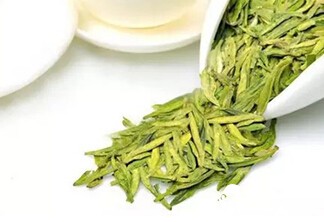
Tea Tools:
Transparent glass teapot, fair cup, small straight cup, electric kettle, basic kung fu tea set;
Brewing Method:
Warming the Cup:
Use boiling water to warm the tea utensils, ensuring even heat distribution.
Rinsing the Tea:
Place about 5g of tea leaves into the teapot; rinsing should be quick, aiming not to extract the tea flavor but to evenly heat the leaves and awaken their aroma.
Brewing the Tea:
Discard the rinsing water, add the prepared Keemun Black Tea, pour boiling water up to 80% of the teapot’s capacity, and let it steep for 2-3 minutes.
Serving the Tea:
Pour the brewed tea into a fair cup, then distribute it to small straight cups.
Tasting the Tea:
Enjoy the natural fruity aroma and the rich, mellow taste of Keemun Black Tea.
Dongding Oolong Tea
Dongding Oolong Tea, produced in Taiwan, grows at altitudes of 1000-1800 meters. In Taiwan, high-mountain Oolong tea is the most renowned,被誉为“茶中圣品”. Dongding Oolong Tea has a refreshing and pleasant taste, with a honey-green and golden-yellow liquor and a fresh, elegant aroma. The tea is named after Dongding Mountain in Lugu, Taiwan, where the foggy and steep terrain requires tea pickers to "freeze" their toes to avoid slipping.
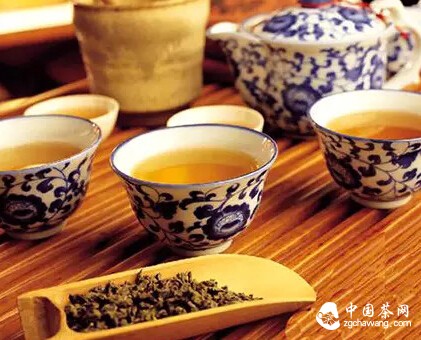
Tea Tools:
Purple clay teapot, fair cup, small cup, electric kettle, basic kung fu tea set.
Brewing Method:
Warming the Cup:
Use boiling water to warm the tea utensils.
Rinsing the Tea:
Place about 5g of tea leaves into the purple clay teapot; rinsing should be quick.
Brewing the Tea:
After rinsing, pour boiling water into the teapot from a height. Cover the teapot and pour boiling water over the teapot’s exterior three times to fully release the tea’s rich aroma.
Serving the Tea:
Pour the brewed tea into a fair cup quickly and distribute it to small cups to enjoy the intense aroma.
Wuyi Da Hong Pao
Wuyi Da Hong Pao,被誉为“茶中状元”, is the king of rock tea, produced in Wuyi Mountain, Fujian Province. The finished tea has a rich aroma, mellow taste, and a distinct "rock rhyme" character, leaving a lingering fragrance and被誉为“武夷茶王”.
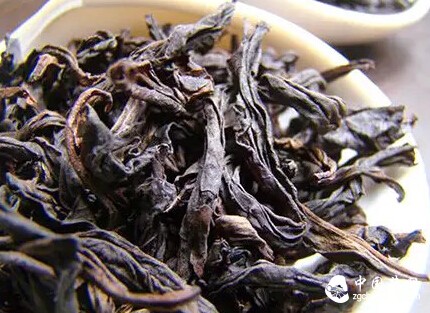
Tea Tools:
Purple clay teapot, fair cup, small cup, electric kettle, basic kung fu tea set.
Brewing Method:
Warming the Cup:
Use boiling water to warm the tea utensils.
Rinsing the Tea:
Use a tea scoop to place an appropriate amount of Da Hong Pao into the purple clay teapot; rinsing should be quick.
Brewing the Tea:
Discard the rinsing water, pour boiling water into the teapot, and steep for 4-5 minutes. Pour boiling water over the teapot’s exterior three times to fully release the tea’s rich aroma.
Serving the Tea:
Pour the brewed tea into a fair cup quickly and distribute it to small cups to enjoy the aroma and observe the tea leaves.
Taiping Houkui
Taiping Houkui is produced in the Huangshan District of Anhui Province. The tea leaves are flat and straight, with two leaves embracing a bud, naturally舒展, and hidden white hairs. The leaves are emerald green, with a high orchid aroma,醇厚回甘, and a unique "monkey charm". The liquor is清澈, and the brewed leaves are bright green and plump.
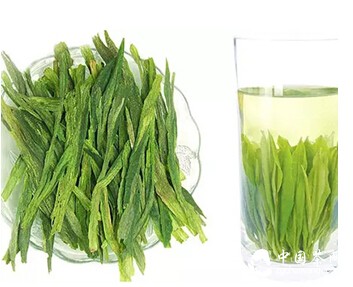
Tea Tools:
Transparent glass cup, electric kettle, basic kung fu tea set.
Brewing Method:
Warming the Cup:
Use water at about 80°C to warm the glass cup.
Rinsing the Tea:
Place 7-8 tea leaves into the glass cup, root-side down, to admire the tea’s shape.
Brewing the Tea:
Pour water at about 80°C along the cup’s wall for a quick rinse.
Serving the Tea:
Fill the cup to one-third capacity, wait 1-2 minutes, then top it up.
Huangshan Maofeng
Huangshan Maofeng is produced in Huangshan, Anhui Province. The tea buds are exceptionally plump, tender, and耐泡, with a rich aroma and醇甜 taste. The leaves are嫩绿油润,细扁如雀舌, with visible white hairs. The liquor is杏黄清澈.
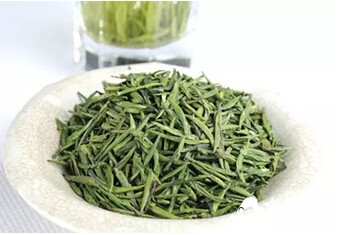
Tea Tools:
Ceramic lidded bowl, electric kettle, basic kung fu tea set.
Brewing Method:
Warming the Cup:
Use water at 75-80°C to warm the ceramic lidded bowl.
Adding Tea:
Use a tea scoop to place 3-5g of tea leaves into the bowl.
Brewing the Tea:
Add enough water at 75-80°C to cover the leaves, then cover the bowl.
Serving the Tea:
After 1-2 minutes, fill the bowl with water along the wall and enjoy the aroma.
Lu’an Guapian
Lu’an Guapian is a special type of green tea. The leaves are黛绿泛黄, flat, and free of buds or stems, resembling melon seeds. The taste is清高, the liquor清澈, and the aftertaste甘甜.
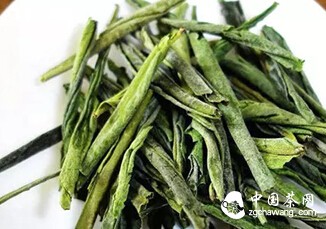
Tea Tools:
Straight glass cup, electric kettle, basic kung fu tea set.
Brewing Method:
Warming the Cup:
Use water at 75-80°C to warm the glass cup.
Adding Tea:
Place 3g of tea leaves into the glass cup.
Brewing the Tea:
Add enough warm water to cover the leaves, gently shake the cup to let the leaves absorb water, wait 3 minutes, then fill the cup and enjoy the tea.
West Lake Longjing
West Lake Longjing is produced in the mountains around West Lake, Hangzhou, Zhejiang Province. The leaves are嫩绿泛黄, flat, and smooth. The liquor is嫩黄明亮, with a清香 or嫩栗香, and some teas have a high-fire aroma,清爽浓醇.

Tea Tools:
Wide-mouth transparent glass cup, electric kettle, basic kung fu tea set. Use purified or spring water for brewing.
Brewing Method:
Warming the Cup:
Use boiling water to warm the cup.
Adding Tea:
Use a tea scoop to place 5-7g of tea leaves into the glass cup.
Brewing the Tea:
When the water cools to about 85°C, pour it into the cup from a height to cover the leaves. Shake the cup gently for 30 seconds, then fill the cup to 90% capacity and steep for 35 seconds before drinking.
Tasting the Tea:
Refill the cup when half-empty, increasing steeping time with each brew.
Tips for Brewing Longjing Tea:
Use water at 75-85°C. Avoid boiling water, as Longjing is unfermented and delicate. Pour from a height and serve low.
Dongting Biluochun
Dongting Biluochun is produced in Dongting Mountain,太湖, Jiangsu Province. The leaves are纤细, curled like snails, covered with fine hairs, and emerald green. The aroma is fresh and持久, the taste鲜爽香醇, and the liquor嫩绿明亮.
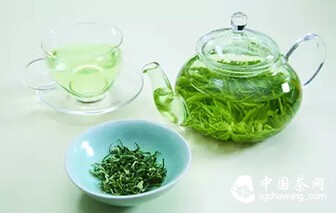
Tea Tools:
Ceramic lidded bowl, electric kettle, basic kung fu tea set.
Brewing Method:
Warming the Cup:
Use water at 75-80°C to warm the bowl.
Rinsing the Tea:
High-quality Biluochun has many fine hairs, so rinse quickly with 75-80°C water.
Brewing the Tea:
Discard the rinsing water, pour water along the bowl’s wall, and observe the leaves.
Anxi Tieguanyin
Anxi Tieguanyin is produced in Anxi County, Fujian Province. The leaves are砂绿起霜,肥壮紧结. The aroma is馥郁持久, with osmanthus notes,醇厚甘爽, and the liquor is橙黄鲜丽.
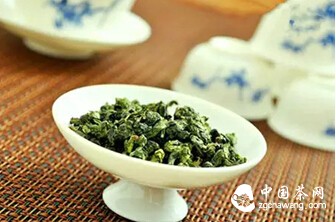
Tea Tools:
White porcelain lidded bowl, fair cup, wide-mouth cup, electric kettle, basic kung fu tea set.
Brewing Method:
Warming the Cup:
Use boiling water to warm the bowl.
Rinsing the Tea:
Place 7-8g of tea leaves into the bowl and rinse quickly.
Brewing the Tea:
Discard the rinsing water, pour boiling water along the bowl’s wall, and skim off foam.
Serving the Tea:
Steep for 3-4 seconds, then separate the tea from the liquor and pour into a wide-mouth cup.
Junshan Yinzhen
Junshan Yinzhen is a famous yellow tea from Junshan Island in Dongting Lake, Hunan. The leaves are金黄光亮,肥壮挺直, with a fresh aroma,浅黄 liquor, and a sweet taste.
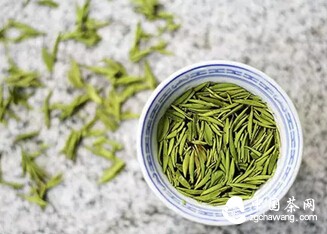
Tea Tools:
Straight glass cup, electric kettle, basic kung fu tea set.
Brewing Method:
Warming the Cup:
Use water at 75-80°C to warm the cup.
Adding Tea:
Place 3g of tea leaves into the glass cup.
Brewing the Tea:
Fill the cup to 80% capacity, gently shake to let the leaves absorb water, and observe the leaves standing upright.